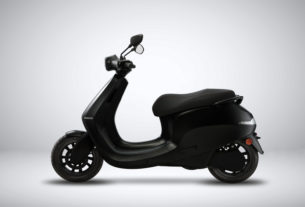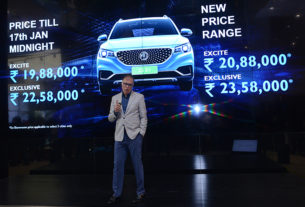Nissan has crafted the EV Driver Etiquette – a one-stop manual for EV drivers and enthusiasts to identify and practice EV-friendly behaviour. It offers simple, confidence-boosting advice for a seamless driving experience.

Drawing on the Nissan’s heritage as a pioneer in mass-market electric mobility, the pocket guide is designed to provide digestible, reassuring advice for new and seasoned EV drivers. This is amidst an uptick of Europeans getting back behind the wheel and a 68.4 percent year-on-year increase in electric car total sales from January to April this year.
The Nissan EV Driver Etiquette is infused with a series of simple yet insightful tips, carefully curated to help electric car drivers connect even more with their EV. It also features guidance on how to support fellow EV drivers and simple ways to boost confidence on the road. Further, it addresses a broad list of everyday EV driving scenarios, including everything from an EV preparation checklist and how to help others in the EV community, to optimising the recharge process and respectful parking practices.
The Nissan EV Driver Etiquette
1. Sharing is caring
Lend a helping hand by sharing your own tips on local public charging points with friends and family, or use apps and forums to pool your advice with tips from fellow EV drivers in the local area.
2. Consider your fellow EV enthusiasts
Avoid unplugging other drivers’ EVs at public charging points and if you have a charging point at home, consider offering it to your neighbour in a way that is safe and compliant. It is crucial we all continue to be kind to others. About 88 percent of people prioritise charging at home, so sharing your charging spot if needed could go a long way and might make someone’s day.
3. Avoid ICEing and a frosty reception
Just as you would avoid parking at an unused fuel pump, save everyone the hassle by not parking in an EV charging spot if you don’t intend to use the charger. As disabled drivers require the use of their designated spaces, EV drivers need their own spots to charge. If you do need to charge your electric car, be considerate and think how long you need to charge it for.
4. Take good care of your battery
Avoid leaving your EV at low battery level for a long time to ensure battery capacity and minimize the impact on driving range. If possible, park in a closed tempered place.
5. Plan your recharge
If you’re planning a longer journey, plot out your route first and make use of mapping services to see available charging points along the way. Planning ahead always pays off; it goes a long way to making a lengthy trip even easier. There are some really useful tools to help you do this; the Nissan Charge app provides the price and availability of charging points in real time, allowing you to be flexible. In average, it is €2 per 100 km to charge a LEAF, so you can make the most of public charging points on the move.
6. Don’t need much power? Leave a friendly note
If you don’t need to charge for very long at a public charging point, why not leave a nice note on the windshield or the charger for the next EV drivers to let them know how long it will take you, or at what time you are coming back.
We all need to use public services in a timely manner and charging points are not the exception, so write a note saying you’re happy for the next EV driver to unplug your car – if the type of charging source allows it – you’re guaranteed to put a smile on their face!
7. Check your tyres and driving settings
To maximise power efficiency, switch on your car’s energy-saving modes and ensure your tyres are inflated to the manufacturer-recommended level. You can boost the efficiency of your electric car with a couple of quick steps. Choosing the appropriate drive mode is key.
With the Nissan LEAF, you can choose Eco-Mode to optimise your journey, recommended for city driving. Also, Nissan’s unique technology e-Pedal to accelerate, and decelerate your LEAF using one pedal only optimises regenerative braking and lets the car do the work. Activating the LEAF’s B mode further enhances regenerative braking, providing even more energy on the move.
8. Explore the range of available charging options
An electric car is like a sleeping cat; it’s inactive for 20 hours every day, make the most of this time. Whether it’s rapid public charging point, an installed wall unit at home, or a standard domestic plug, you can effortlessly charge your electric car wherever you can access mains power – just like your smartphone.
9. Look after your local charging points
Just as you would take care of your charging solutions at home, take care of your local public charging infrastructure to ensure it operates faultlessly and at its fastest.
Source: Nissan




